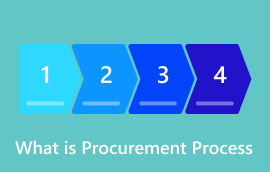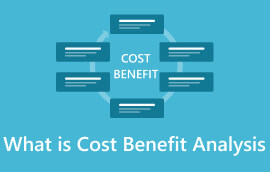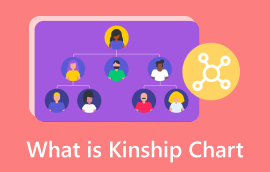Supply Chain through AI: All-Inclusive Guide to Its Impact
These days, flawless supply chains are the lifeblood of getting products where they need to be. It was once a simple network and is now the backbone of this global ecosystem. Thus, it also became complex as time passed by. And so, that’s where artificial intelligence has become the answer to make everything simple. In this post, we’ll delve into the application of AI in supply chain management. Aside from that, other things will be discussed as you read here. Without further delay, let’s begin!

- Part 1. How AI is Applied in Supply Chain
- Part 2. How Does AI Affect Supply Chain Performance
- Part 3. Disadvantages of AI in Supply Chain
- Part 4. Future of AI in Supply Chain
- Part 5. Bonus: Supply Chain Diagram Maker
- Part 6. FAQs About AI in Supply Chain
Part 1. How AI is Applied in Supply Chain
Artificial intelligence is being applied in supply chain management in many ways. It starts from the production of the goods up until it reaches the hands of the customer. It is applied to make the entire process more efficient and responsive. Take a look at the AI in supply chain examples as we apply it:
1. It is applied due to its predictive analytics.
AI uses data from previous trends and patterns to forecast future demand for products. Doing this helps you avoid empty shelves or overstocking.
2. It is capable of automating the warehouse.
In warehouses, you can use AI to optimize the layout for picking and storing goods. Robotic systems are also used to handle the physical task of moving items. Hence, it improves efficiency and reduces your reliance on manual labor.
3. It can optimize routes for deliveries.
AI is also applied in analyzing traffic patterns, weather data, and other variables. The main purpose is to determine ideal delivery routes. With that, you can minimize delays, leading to faster delivery times.
4. It is applied for managing risks.
Another thing, AI can analyze historical data and identify potential disruptions. Weather events, political instability, or supplier issues may cause it. This allows you to create contingency plans and reduce risks.
Part 2. How Does AI Affect Supply Chain Performance
Did you know that AI also has effects on the performance of the supply chain? In this section, we are going to discuss it. It can improve operations in several key areas:
◆ Improved Accuracy and Efficiency
AI algorithms analyze large volumes of data and identify patterns that we may overlook. This results in more precise demand forecasting and inventory management. Thus, it can lead to fewer stock shortages or surpluses.
◆ Increased Speed
AI also affects the speed of the supply chain performance. It enables faster decision-making by processing information and providing insights in real time. Plus, it leads us to quicker responses to market changes and customer demands.
◆ Supply Chain Resilience
Another thing, AI systems can simulate various risk scenarios. These may include extreme weather or sudden spikes in demand. Thus, it can help us develop contingency plans. It also makes the supply chains more adaptable and resilient.
◆ Enhanced Customer Service
AI-driven chatbots and virtual assistants can give 24/7 customer support. These can answer queries and resolve issues in real time. Hence, it leads to improved customer satisfaction and loyalty.
Part 3. Disadvantages of AI in Supply Chain
Although AI offers significant benefits in the supply chain, there are also some drawbacks to consider. In this part, we’ll list them down for you.
1. It is dependent on data.
Artificial intelligence relies heavily on high-quality, clean data to function effectively. Inaccuracies or inconsistencies in data can lead to flawed decision-making by AI systems.
2. It is complex and pricey.
Applying and maintaining AI solutions can be expensive. It is because you must invest in hardware, software, and even talent with expertise in AI and data science. Also, integrating AI seamlessly into existing systems can be a complex challenge.
3. It lacks the capability to explain.
Sometimes, AI algorithms can make decisions that are difficult for humans to understand. It also lacks human expertise, and it cannot replace those skilled workers.
4. There may be security risks.
AI systems can be vulnerable to cyberattacks. So, it can lead to disruptions or breaches of sensitive data. That said, you need strong security measures in place to protect your AI infrastructure.
Part 4. Future of AI in Supply Chain
The future of AI in supply chains promises even greater levels of intelligence, automation, and adaptability. Here are some AI for supply chain optimization exciting trends to see in the future:
◆ Expect more sophisticated robots capable of complex tasks. These may include grasping delicate items or performing maintenance processes. Collaborative robots (cobots) will work alongside human workers. This will further increase efficiency and safety.
◆ Delivery trucks and drones guided by AI could become commonplace. AI can navigate city streets and rural landscapes. So that, you can deliver goods faster and it is cost-effective. Plus, traffic jams and remote locations won’t be a problem anymore.
◆ Also, you can expect AI to work hand-in-hand with other emerging technologies. It includes blockchain for secure data sharing. Aside from that, the Internet of Things (IoT) for real-time data collection. Last but not least, the digital twins for creating virtual simulations of the supply chain.
◆ AI also emphasizes the benefit of real-time visibility. It means that you can see everything happening in your supply chain as it unfolds.
Part 5. Bonus: Supply Chain Diagram Maker
Are you in search of a diagram maker for your supply chain management? MindOnMap is here to help you. The tool is popular for its capabilities to create various intuitive diagrams. With it, you can make a diagram for your supply chain and design that suits your preferences. It offers different shapes, themes, styles, icons, and more to create one. It also enables you to insert photos or links as you wish to make your diagram informative. Also, as you work in the tool, it saves your work to prevent you from losing any data. Aside from that, it allows you to save diagrams in formats like JPG, PNG, PDF, and so on. Finally, it provides an online version and a downloadable application that you can use. Start your supply chain creation with MindOnMap today.
Secure Download
Secure Download

Further Reading
Part 6. FAQs About AI in Supply Chain
Will AI replace supply chain management?
No, AI is not here to replace human supply chain professionals. Instead, it's becoming a powerful tool to extend their capabilities. AI handles data analysis and repetitive tasks.
How generative AI helps in the supply chain?
Generative AI helps generate solutions in the supply chain. It creates solutions like product design suggestions and more adaptable demand forecasts.
How is Amazon using AI in the supply chain?
Amazon is a leader in adopting AI for supply chain optimization. It uses AI to analyze the collected information. AI enables features like personalized recommendations, optimized inventory, fraud detection, and more.
What is AI in the retail supply chain?
AI in the retail supply chain involves using AI algorithms to improve customer experience. We use it for demand forecasting, inventory optimization, personalized marketing, and more.
Conclusion
In the end, this is all the information you need to learn about AI in the supply chain. As AI continues to evolve, the possibilities within the supply chain are truly limitless. Now, if you’ve ever wanted to visualize your supply chain, MindOnMap can be your go-to solution. It is a tool that will surely let you create clear and concise supply chain diagrams. Making any visual representations is also easier because of its intuitive interface.










